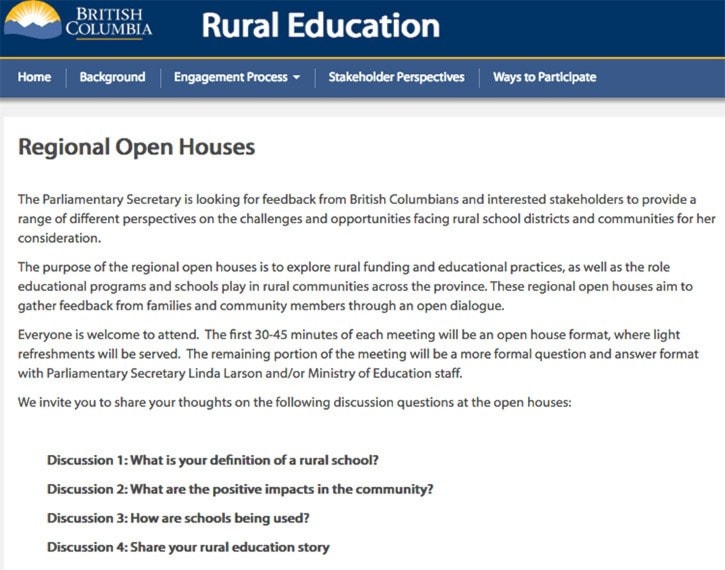The message was heard loud and clear, says the board chair of School District 20.
Schools are much more than a place children go to receive public education - in rural B.C., schools are a community hub for gatherings of all ages, like town hall meetings, girl scout events, even belly dancing classes in some locales.
“The feedback was overwhelming,” Teri Ferworn told the Trail Times. “There are not that many big buildings in smaller communities, for example, like Fruitvale. They have a hall, but it’s in use a great deal, so the school is used for community gatherings, classes and community education.”
That was one takeaway Ferworn recalled from the recent regional Rural Education Open House hosted in Trail by Parliamentary Secretary Linda Larson.
More than 40 people attended the Friday night event, including children and parents, trustees and administration from SD20 as well as surrounding districts.
Four questions guided the discussion which focused on usage of rural schools, but also asked guests for their personal experiences with education in rural or remote British Columbia.
“A number of people spoke to how important schools are in the community,” Ferworn added. “They are a community hub, that is a vital part of the community’s message that was heard.”
Conversation did gravitate toward challenges rural families face, the most common response being transportation.
“The other thing that came out loud and clear, and that stands out in my mind, is the geographical issues in rural and remote (education),” she added. “The challenge in a lot of cases is back and forth to school … but we also heard how expensive it is to run buses to events, for students who live hours away from the next school and want to be part of intramural sports, for example.”
SD20 board chair Teri Ferworn

Ferworn says similar themes echo in rural school districts across the province.
Engaging the community for feedback was an interesting exercise, she shared, mentioning there was one open house guest who asked what seemed to be on everyone’s mind.
“What are you (Ministry of Education) going to do with this information?” the person queried.
“She (Larson) stood up and said that she asked for a guarantee when she took on the (open house) task on behalf of the ministry, that what she learned would lead to action on behalf of the government,” Ferworn said. “At the end of the open houses, she’s going to come up with recommendations, so she is standing by her findings.”
In British Columbia, approximately 32 per cent of students in the public K-12 education system attend schools located outside of the Greater Victoria, Lower Mainland, and Kelowna areas, many in small communities that use school facilities as a hub for community activities.
The purpose of the regional open houses was to explore rural funding and educational practices, as well as the role educational programs and schools play in rural communities across the province. The final open house is slated for Revelstoke on Friday. A summary of the report to date can be viewed at engage.gov.bc.ca/rural education.
